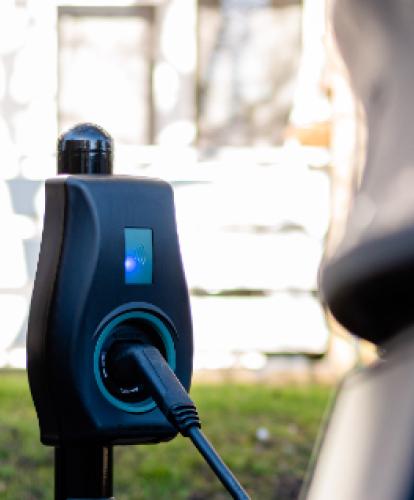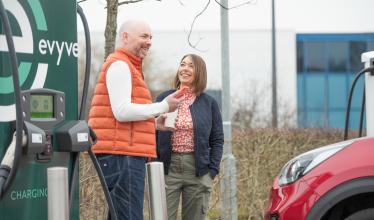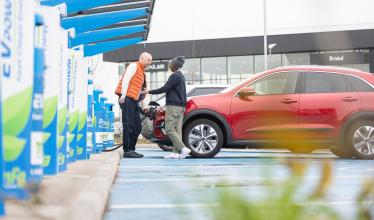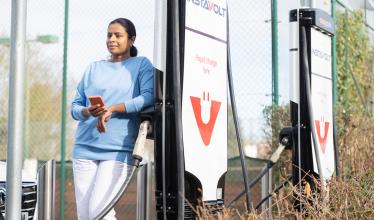On-street electric vehicle (EV) charging is a fast-growing area of the UK’s public charging network. It provides a solution for electric car drivers who live in a flat or a house with no off-street parking, and are therefore unable to charge their car at home.
If you’re thinking about making the switch to an electric car, you’re probably aware that it’s often cheaper and more convenient to charge at home. However, a home charger is certainly not a requirement for an electric lifestyle. If you’d like to drive an electric car but live, for example, in a flat – this is where on-street charging comes in useful.
If this is you, scroll on for more info and advice about on-street charging in the UK.
On-street charging in the UK
Across the country, local councils are working together with charge point operators such as Connected Kerb and char.gy to install on-street chargers for public use.
Walking around your neighbourhood, you’re likely to see quite a range of on-street charging solutions popping up. You’ve probably come across charging devices in converted lampposts as well as bollard-style charge points already – some of the most common solutions. Operators tend to design these charge points to be as simple as possible in order to fit neatly into their surroundings.
How quick are on-street charge points?
Most on-street charge points will have a power rating of 3kW, 5kW or 7kW, and are ideal for overnight charging. Depending on your EV model, the power rating of the charger, and the weather conditions, these charge points will generally take between 6-12 hours to recharge your car to 80% or above.
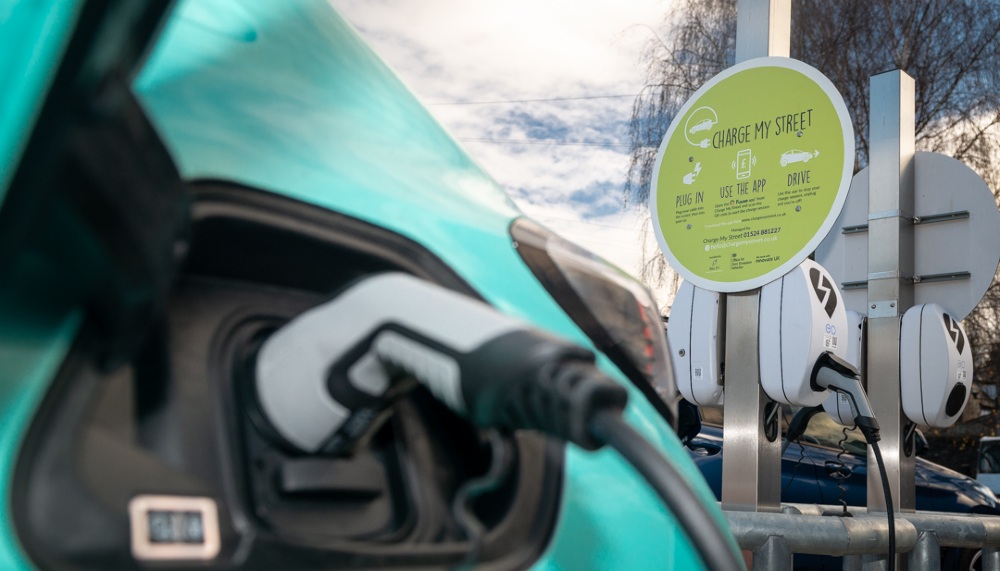
Most on-street chargers will have a power rating of 3kW, 5kW or 7kW.
You may, however, come across some on-street chargers that have a power rating of 22kW. These will power up your car battery in a couple of hours.
What do on-street charge points look like?
On-street charge points are mostly ‘untethered’ so you’ll need your own cable to use the charger. Below are some common examples of bollard and lamppost-style charge points which are the most common type. These particular charge points are examples from on-street provider char.gy, with further styles from Connected Kerb.

The char.gy Bollard
A slimline, stand-alone compact charge point, which can make use of existing infrastructure. You’ll find bollards on the roadside or in car parks.

The char.gy Backpack
The char.gy backpack fits onto existing lampposts and walls, making use of an existing electrical feed. The benefit of converting lampposts is that it makes very good use of space, avoiding any potential access restrictions.
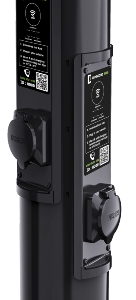
The Connected Kerb Chameleon
The Chameleon is a dual charger, meaning that two EVs can charge at once via its two charging sockets. It’s a bollard style charge point which you’ll find on roadsides and in car parks.

The Connected Kerb Gecko
The Gecko is designed to blend into the environment due to its size and simple design. You’ll usually find Geckos attached to lamp posts or bollards, often with more than one unit attached for multiple EVs to be charged from.
How to find an on-street charge point
Wherever you are in the UK, you can locate charging points in your local areas quickly and easily with the Zapmap app or desktop map, and see the live availability status of more than 70% of these charge points 24/7.
You can choose to filter by location type, and select ‘On-Street’.
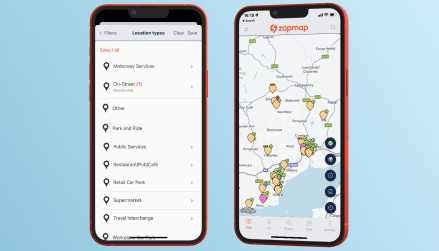
How to pay for on-street charging
Connected Kerb and char.gy are both on-street providers whose chargers are Zap-Pay enabled across the country.
Zap-Pay avoids the hassle of using multiple apps across different networks. This means you can pay for your charging session across networks from within the Zapmap app, with no need for additional apps or RFID cards. You just need to add the credit or debit card you wish to use into the Zap-Pay section in ‘Settings.’ You can also use Apple Pay or Google Pay.
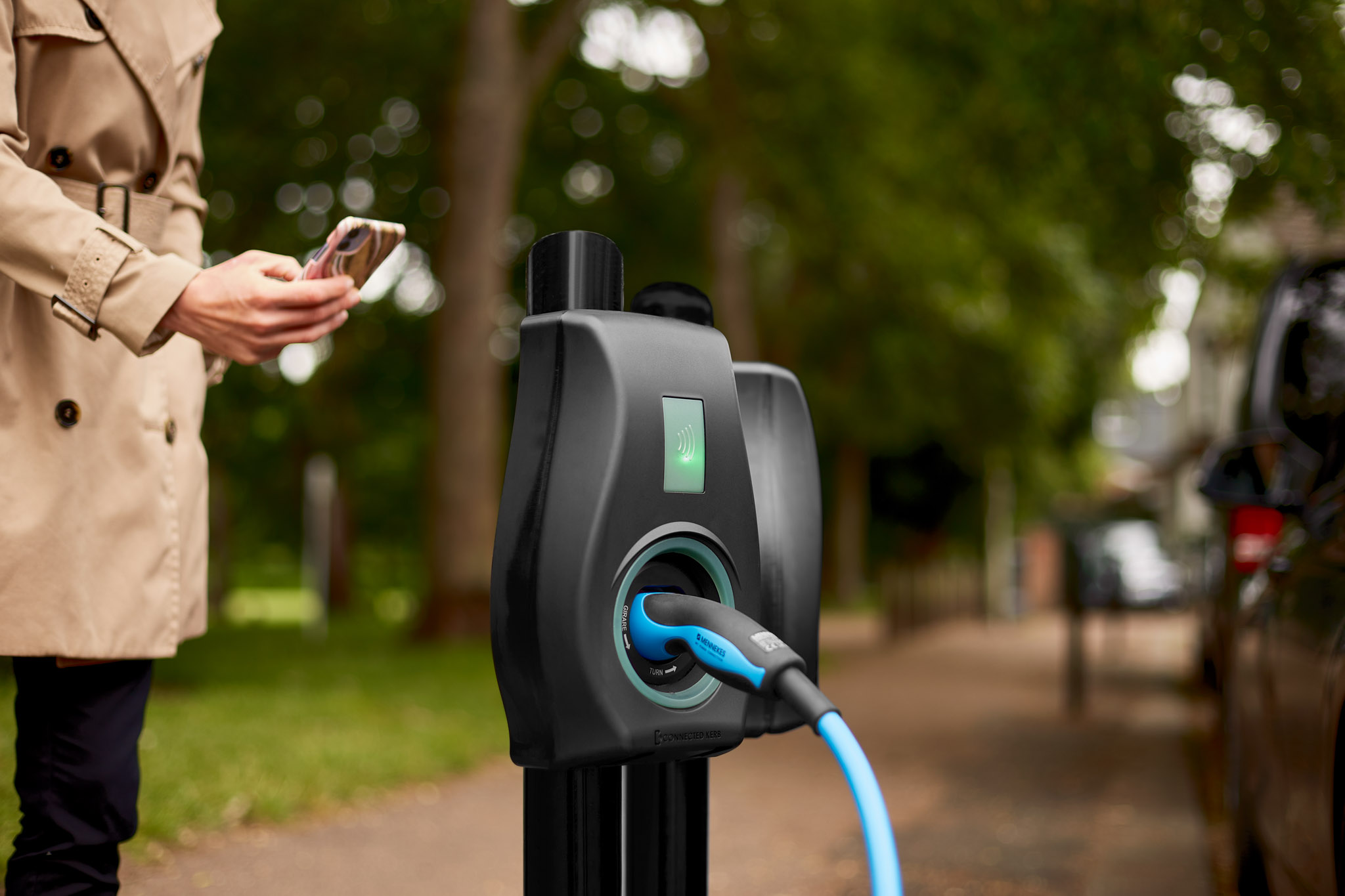
On-street charging provider Connected Kerb accepts Zap-Pay.
At Zap-Pay enabled charge points, you can either select either the Zap-Pay pop up, or select ‘Check-in’ and then press the Zap-Pay button. You can check the app at any time to view the progress of your charge and see receipts from previous charging sessions.
You can learn more about ways to pay in this handy guide on how to pay for public charging in the UK.
How do I request on-street chargers near me?
If you live in London and do not have access to off-street parking, you can contact your borough council and suggest that an on-street EV charge point is installed near your home.
The London Councils website has a list of boroughs and links to request a charge point.
Outside of London, the majority of councils also have the option to request on-street charger installation on their website.
How many on-street chargers are there in the UK?
Although many more will need to be rolled out over the coming years, on-street charge points are one of the most numerous types of charger in the UK. Indeed, as of October 2023, there were more than 16,000 on-street charging locations across the country.
Many local councils are starting to join forces with charge point operators to roll out provision of on-street chargers thanks to government funding programmes. In many cases, the charge point operator will fully fund the delivery, installation and maintenance at no cost to the local council.
